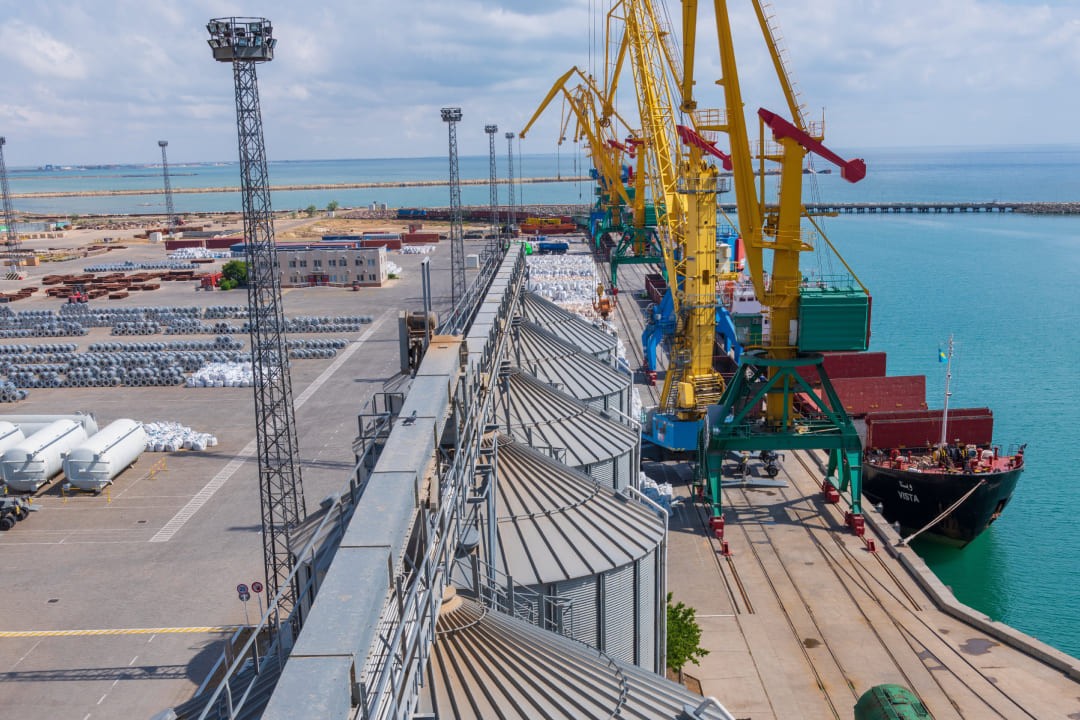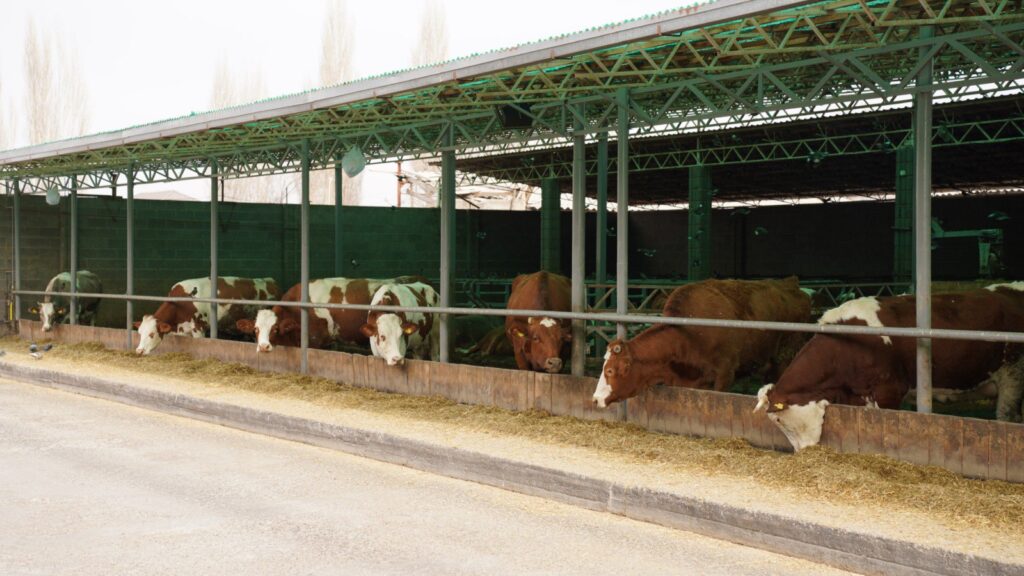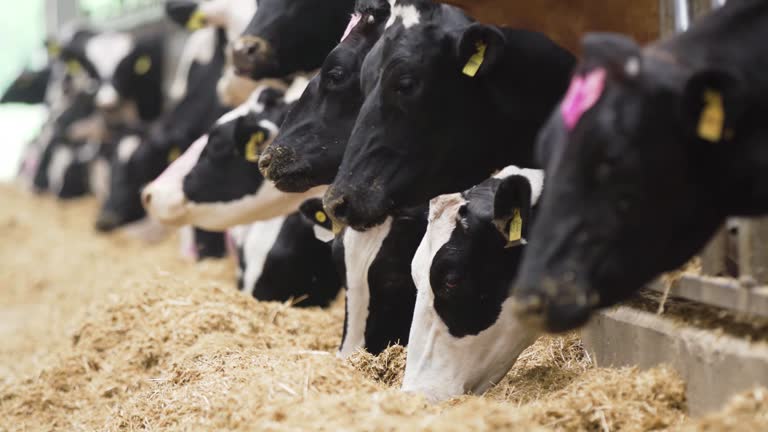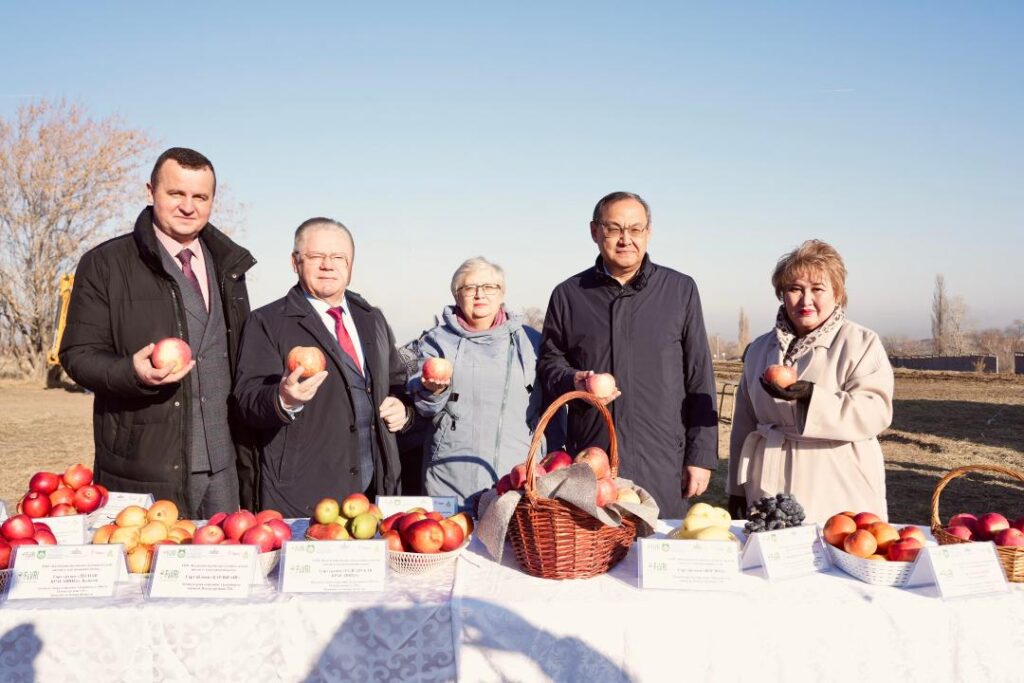According to the International Grains Council, Kazakhstan’s wheat harvest for the 2024/2025 season is expected to reach 16 million tons. As the harvesting campaign begins, the country’s lack of elevator capacity and the problem of mainline railroads are concerns. Idle trains are still a problem, which leads to the introduction of regular restrictions and bans on the acceptance and shipment of wheat due to congestion on the railroad.
Market participants note that the railroad cannot cope with the volume of shipments during the autumn rush, with its infrastructural ceiling on shipments at only 1 million tons of grain per month. This leads to a collapse at border railroad crossings and, consequently, a price drop in the domestic market.
One obvious solution is to expand Kazakhstan’s elevator capacity and grain storage facilities; this is one of the reasons for the increased load on the railroad infrastructure. Thus, according to the Ministry of Agriculture, 191 licensed grain-receiving enterprises have a total storage capacity of more than 13.2 million tons. In addition, agricultural producers have storage capacities for 15.8 million tons of grain, which, as the ministry assures, is enough to store grain considering the projected harvest. Also, according to the ministry, the construction of new grain storage facilities and the expansion of existing ones are envisaged. In 2024-2026, it plans to operate five granaries with a capacity of 30,200 tons.
The national railway company Kazakhstan Temir Zholy (KTZ) has already established a grain headquarters, involving representatives from local executive bodies, the National Chamber of Entrepreneurs “Atameken,” and shippers. This headquarters ensures adequate transportation for the upcoming season’s harvest. As Salamat Abzhaliyev, Deputy General Director for Marketing and Planning of KTZ-Gruzovye Transportations LLP, noted during the briefing held at the end of August, for seven months of the current year, the total volume of grain loading on the network of railroads of the country amounted to 4.7 million tons. Only in Kazakhstan did wheat transportation increase by 3%, amounting to 1.1 million tons.
An important factor affecting the efficiency of transporting grain and milling products is the availability of specialized wagons. In addition to boxcars, grain carriers are designed to transport these specific cargoes. Today, the total fleet of boxcars and grain cars on the railroad is about 16,000 and 12,000, respectively. According to KTZ, this fleet is sufficient to fulfill all agreed transportation plans.
According to forecasts of the International Grain Council, the export of Kazakhstani wheat in the 2024/2025 season is projected at 10 million tons. During the first six months of the year, 2.4 million tons of wheat have already been shipped. The main buyers of domestic grain are traditionally Uzbekistan, China, Tajikistan, Italy, and Afghanistan. Grain exports to China have grown 5.7 times in the last three years, which makes China a key export destination.
China is ready to accept large volumes of grain from Kazakhstan. Today, the country buys about 10 million tons of wheat worldwide, including from Kazakhstan. However, further development of trade is constrained by limited transportation logistics. Since the beginning of the year, KTZ has repeatedly imposed restrictions and bans on the shipment and acceptance of grain and milling products to be transported in the direction of China. Nevertheless, KZT plans to export over 2 million tons of grain to China this year.
For its part, China has already implemented a number of infrastructure projects in the border cities of Alashankou and Khorgos to increase the volume of grain cargo transportation and improve its efficiency. These projects have built modern grain terminals with a capacity of 6,000 tons per day and the possibility of automated unloading of the entire train.
It is worth recalling that at the end of March of this year, KTZ, together with employees of the Chinese railroad at the Dostyk-Alashankou border crossing, already set a daily record of 21 trains for the transfer of trains to China, which indicates the potential for further increases in freight traffic to increase exports to China.
Afghanistan remains a promising market for Kazakhstani wheat and flour. The change in the political situation in Kabul led to the suspension of trade operations with all partner countries, including Kazakhstan. For some time, interbank transactions and delivery of railroad cars were impossible, as the owners feared for their safety and return. However, the problems have been resolved. Today, transactions are made through third-country banks, and railcar delivery has been restored. Among other things, Afghanistan remains a priority flour market for Kazakhstan, accounting for 70% of its total exports. In eight months of the 2023/24 marketing year, Kazakhstan exported 172,840 tons of wheat to Afghanistan. The annual demand for the Afghan market is from 2 to 3 million tons. Despite an increase in wheat crops, the country’s leadership has agreed with Kazakhstan to import grain at an affordable price. During the recent visit of an Afghan delegation to Kazakhstan, the issues of establishing a stable trade between the countries, purchase of wheat, and increase of exports through the railroad network were discussed. As a result of the meeting, the Kazakhstani side reduced the duties by 50% on Afghan exports.
An alternative route through the Aktau seaport is also being worked out to transport grain cargoes to Afghanistan. This will allow loading the capacities of western terminals — Aktau Northern and Akbidai, with a total capacity of 82,000 tons — as well as Beineu grain terminal, which can simultaneously store 100,000 tons of grain, receive up to 500 railcars daily, and send up to 2 million tons per year in packaged form and grain trucks.
Agrarians in neighboring Uzbekistan are breaking records in their wheat harvests. For the first time in the country’s history it has exceeded 9 million tons this year. This is even though the republic has been a top importer of Kazakhstani wheat for several years. The volume of shipments for the first six months of the current year has already exceeded the volume for the whole of last year. In the September-February 2023/24 marketing year, Kazakhstan exported 1.6 million tons of wheat to Uzbekistan. Tashkent accounts for more than 40% of Kazakhstan’s grain exports.
Uzbekistan in 2024 reduced the transit tariff for railroad transportation of grain from Kazakhstan. It is also worth noting Kazakhstan’s large-scale efforts to ease the load on the Saryagash station border crossing with its southern neighbor, which currently handles about 80% of Kazakhstan’s grain exports. It is about constructing a new railway line, Darbaza-Maktaaral, which will significantly help the transportation of grain, not only cargo, to Central Asia. In addition, last year, KTZ increased the number of railroad tracks from four to eight at the Kuprik border station, allowing for the exchange of trains at the Saryagash-Kuprik border crossing. Six more tracks are under construction this year.
Europe has become a significant market for Kazakhstan’s agricultural products. Given the current geopolitical situation in the region and sanctions restrictions against Russia, one of the largest grain suppliers, the European Union opens vast opportunities for developing Kazakhstan’s export potential.
According to a report from the European Commission, the republic is already in first place among durum wheat exporters to the West, ahead of Turkey and Canada. Kazakhstan supplied the European Union with 19,000 tons of durum wheat in the season 2024-2025.
Kazakhstan optimizes the railway and elevator infrastructure in the current export market situation to reduce the seasonal three-month peak. In the conditions of an active increase in wheat-grown volumes and the development of its grain processing by importing countries, Kazakhstan plans to diversify its export structure by developing deep grain processing with the sale of value-added products. Thus, only neighboring China is planning a significant increase in grain production in the coming years. According to the action plan released by the State Council of the People’s Republic of China, by 2030, China intends to increase its capacity by more than 50 million tons. By then, the area under crops in the PRC will amount to about 117 million hectares.
Under these conditions, according to the Ministry of Agriculture, Kazakhstan, in the coming years, plans to implement 13 projects for grain processing, including the construction of three enterprises for deep processing of wheat and corn in the Astana, Kostanay, and Turkestan regions. It is also planned to reduce areas in grain-growing regions of the country to diversify and move away from monoculture. By 2028, their volume will be reduced by 855,000 hectares. At the same time, due to the reduction of spring wheat crops, the area of highly profitable and socially essential crops will be increased.









